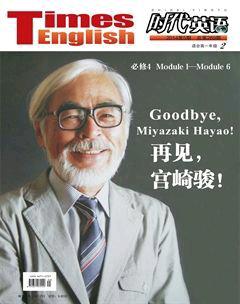盘点世界各国千奇百怪的
As the clock strikes 12 on December 31, millions will pop champagne corks and light fireworks while others indulge in quirkier New Years rituals like melting lead, leaping off chairs or gobbling grapes. One of the worlds oldest shared traditions, New Years celebrations take many forms, but most cultures have one thing in common—letting ones hair down after a long, hard year.
For much of the globe, this involves sipping bubbly with friends until the sun comes up, seeing out the old year with bonfires and flares and off-key renditions of Auld Lang Syne.
But others have rather more curious habits.
In Finland, tour guides say, people pour molten lead into cold water to divine the year ahead from the shape the metal sets in. If the blob represents a ship, it is said to foretell travel; if its a ball, good luck.
In Denmark, people stand on chairs and jump off in unison as the clock strikes midnight, symbolically leaping into the new year.The Danes also throw plates at their friends houses during the night—the more shards you find outside your door in the morning the more popular you are said to be.
The Dutch build massive bonfires with their Christmas trees and eat sugary donuts—one of many cultures to consume round New Years foods traditionally believed to represent good fortune.
Spaniards, in turn, gobble a dozen grapes before the stroke of midnight, each fruit representing a month that will either be sweet or sour.
In the Philippines, revellers wear polka dots for good luck, while in some countries of South America people don brightly coloured underwear to attract fortune —red for love and yellow for financial success.
Despite regional and cultural differences, for most the New Years festivities are a chance to let off steam before the annual cycle starts all over again.
当时钟在12月31日午夜12点敲响时,数百万人将开香槟放烟火来庆祝新年,其他许多人则将举行一些更为奇特的庆祝仪式,诸如熔铅、跳椅子或吃葡萄。作为举世同庆的最古老的传统之一,新年的庆祝活动有多种形式,但大多数文化对新年的庆祝都有个共同之处——就是在度过漫长、辛劳的一年之后好好放松一下。
对于世界上许多人而言,庆祝新年就是和朋友一起彻夜不眠,喝着香槟酒,在篝火前哼着跑调的《友谊天长地久》,欣赏着辞旧迎新的烟花,直到新年的太阳升起。
但其他人则有着更为奇特的风俗习惯。
据导游说,在芬兰,人们会把熔化的液体铅倒进冷水里,通过铅在水中形成的形状来占卜新的一年的运气。如果铅团的形状像船,这意味着新的一年将要去旅行;如果是一个球,就预示着好运。
在丹麦,人们站在椅子上,在午夜钟声敲响时一起跳下椅子,这就象征着人们跨入了新的一年。丹麦人还会在除夕夜向朋友的家扔盘子,第二天清早你在门外发现的陶瓷碎片越多,就说明你越受欢迎。
荷兰人会用圣诞树点起巨大的篝火堆,在篝火前吃甜甜圈——许多文化都有这种在新年吃圆形食物的传统,人们相信圆形食物代表着好运。
西班牙人则会在午夜钟声敲响前吃下十二颗葡萄,每一颗葡萄都代表新一年中的一个月,如果葡萄是甜的,那么它代表的那个月份的生活就是甜的;葡萄是酸的,那么就意味着相应的月份会过得比较糟糕。
在菲律宾,狂欢者会穿上有圆点图案的衣服,因为那象征着好运;而在南美的一些国家,人们会穿上颜色鲜亮的内衣以招来好运——红色代表爱情,黄色代表经济上的成功。
尽管存在着地区和文化的差异,对大多数人而言,新年的庆祝活动是一个让人们可以在新的一轮循环开始之前放松减压、发泄情绪的机会。

